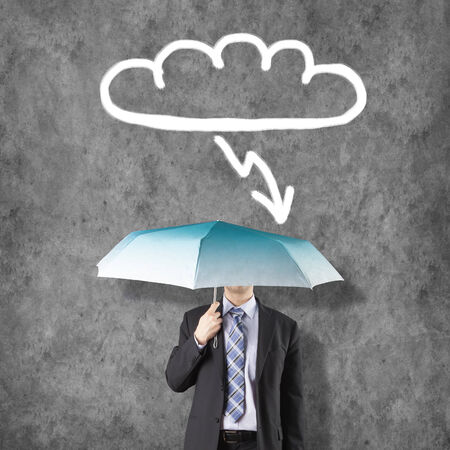1. Understanding the Growing Frequency of Natural Disasters
In recent years, the United States has seen a significant uptick in natural disasters that have left communities reeling and insurance companies rethinking their strategies. From powerful hurricanes battering the Gulf Coast and Atlantic seaboard, to devastating wildfires sweeping through California and the West, extreme weather events are becoming more frequent and intense. Floods, once considered rare in some regions, now threaten homes and businesses from the Midwest to the Southeast with alarming regularity. Scientists attribute much of this increase to climate change, which is intensifying weather patterns and making disasters harder to predict and manage. As a result, Americans are facing greater risks to property, health, and financial security than ever before. This surge in disaster frequency isnt just a concern for those directly affected—its reshaping how insurers assess risk, set premiums, and design coverage options. Understanding these emerging trends is crucial for both consumers and industry leaders as they prepare for a future where environmental threats may become the new normal.
2. How Natural Disasters Affect Insurance Markets
When natural disasters strike—like hurricanes, wildfires, or floods—the insurance industry is often on the front lines of financial recovery. These catastrophic events can shake up insurance markets in ways that are both immediate and far-reaching. Insurers must not only deal with a surge in claims but also reevaluate how they assess risk, price policies, and manage their own financial stability.
Financial Challenges for Insurers
After a major natural disaster, insurance companies face significant financial strain. They have to pay out large sums to cover damages, which can quickly deplete their reserves. This sudden outflow of cash may impact an insurer’s ability to meet future obligations or even threaten their solvency if the losses are extreme.
| Challenge | Description |
|---|---|
| Claims Surge | Large number of claims filed at once increases payout pressure. |
| Capital Adequacy | Insurers may need to raise additional capital to stay solvent. |
| Premium Adjustments | Increased losses can lead to higher premiums for policyholders. |
Operational Hurdles Post-Disaster
The operational side of responding to disasters is just as complex. Insurance companies must process thousands of claims efficiently while ensuring accuracy and fairness. This often means ramping up staffing, investing in new technologies, and collaborating with local authorities and contractors. At the same time, supply chain disruptions—such as shortages of construction materials—can slow down claim settlements and frustrate customers.
The Ripple Effect: Market-Wide Impacts
The aftermath of major catastrophes doesn’t just affect individual insurers—it can change the entire insurance landscape. Some companies might pull out of high-risk regions entirely, reducing coverage options for homeowners and businesses. Others may tighten underwriting standards or exclude certain perils from policies altogether. These shifts can make it harder for people in vulnerable areas to get affordable coverage, raising important questions about long-term resilience and equity.
A Turning Point for Greener Solutions
As climate risks intensify, insurance companies are rethinking traditional models. There’s growing interest in supporting sustainable building practices, incentivizing disaster-resistant construction, and investing in technologies that help communities adapt to a changing environment. By addressing these financial and operational challenges head-on, insurers play a crucial role in preparing for a greener—and safer—future.

3. Rising Costs: What Policyholders Need to Know
Over the past decade, Americans have seen their insurance premiums steadily climb—and natural disasters are a big reason why. Wildfires in California, hurricanes along the Gulf Coast, and severe storms across the Midwest are happening more frequently and with greater intensity. These events lead to billions of dollars in damages each year, forcing insurance companies to reassess their risk calculations. As disaster risks rise, insurers often have no choice but to increase rates for homeowners, renters, and even auto policies.
Why Are Premiums Going Up?
Insurance works by pooling risk—everyone pays in so that those who experience loss get support. But when disasters strike more often and cause more damage, insurers pay out more claims than expected. To cover these mounting costs, they raise premiums for everyone. In some high-risk areas, such as coastal Florida or wildfire-prone California hillsides, some insurers are even pulling out entirely or restricting new policies. This leaves residents scrambling for coverage from state-run insurance pools, which can be expensive and offer limited protection.
How Policy Coverage Is Changing
It’s not just about higher prices; what your policy covers is changing too. Many insurers are tightening their terms by adding exclusions for certain types of damage—like flooding or mudslides—or increasing deductibles on claims related to natural disasters. Homeowners may find that what was covered last year is no longer included unless they buy additional riders or specialty policies.
What Can You Do?
If you’re a policyholder, it’s important to read the fine print on your policy renewals and talk with your agent about any changes. Shop around for competitive rates and consider investing in home improvements that reduce risk, like fire-resistant landscaping or storm shutters. Some states also offer resources and subsidies to help residents find affordable coverage or reinforce their homes against disaster threats.
The bottom line: Natural disasters are reshaping the insurance landscape across the U.S., making it crucial for individuals and families to stay informed, prepared, and proactive about their coverage options.
4. The Push for Green and Resilient Insurance Solutions
As natural disasters become more frequent and severe due to climate change, the insurance industry in the U.S. is shifting towards green and resilient solutions. Insurers are no longer just paying out claims; they’re actively seeking innovative ways to reduce risks, support sustainable rebuilding, and encourage environmentally friendly practices among policyholders. Here’s how insurers are leading the charge:
Embracing Innovation in Underwriting and Products
Insurance companies are developing new products that reward eco-friendly choices. For example, some home insurance policies now offer discounts for using sustainable building materials or installing energy-efficient systems after a disaster. These policies not only help the environment but also lower long-term claims by making properties more resilient to future events.
Investing in Sustainable Infrastructure
Many insurers are directing their investments toward green infrastructure projects, such as renewable energy, flood defenses, and wildfire prevention programs. By supporting these initiatives, insurers help communities become less vulnerable while aligning their portfolios with environmental goals.
Examples of Green Insurance Solutions
| Solution | Description | Benefit |
|---|---|---|
| Green Rebuilding Coverage | Covers extra costs for eco-friendly repairs post-disaster | Encourages sustainable construction, reduces environmental impact |
| Parametric Insurance | Pays out based on event triggers (like hurricane wind speeds) | Faster payouts, supports quick recovery and rebuilding |
| Discounts for Risk Reduction | Lower premiums for mitigation measures (solar panels, fire-resistant roofs) | Makes homes safer and more energy efficient |
| Sustainable Investment Portfolios | Funds invested in renewable energy or climate resilience projects | Supports community adaptation, aligns with ESG goals |
Collaborating with Communities and Technology Providers
Insurers are partnering with local governments, tech firms, and nonprofits to develop risk maps, early-warning systems, and apps that keep homeowners informed. This collaborative approach helps everyone stay one step ahead of disaster risks while promoting a culture of preparedness.
The Bottom Line: Building Back Smarter and Greener
The push for green and resilient insurance isn’t just about protecting profits; it’s about creating a safer, more sustainable future for American families and businesses. As these innovative solutions take root, both insurers and policyholders can look forward to better protection against climate-driven disasters—while doing their part for the planet.
5. Preparing for the Future: Steps Insurers and Homeowners Can Take
As natural disasters become more frequent and severe, both insurers and homeowners need to take proactive steps to strengthen resilience and protect their investments. Here are some practical strategies that can make a real difference.
Upgrade Your Home for Greater Protection
Homeowners can start by making key upgrades that help minimize damage during storms, wildfires, or floods. Simple improvements like installing impact-resistant windows, reinforcing roofs, and sealing gaps can go a long way in keeping homes safe. In areas prone to wildfires, creating defensible space by clearing brush and using fire-resistant landscaping materials is crucial. Likewise, elevating electrical systems and installing sump pumps can provide extra protection against flooding.
Choose Robust Insurance Policies
It’s more important than ever to review your insurance coverage with an eye toward natural disaster risks. Make sure your policy covers common local threats—such as hurricanes in Florida or earthquakes in California—and consider add-ons like flood or earthquake insurance if they’re not included in your standard plan. Working closely with your insurance agent ensures you understand your deductibles, limits, and any exclusions that could leave you vulnerable.
Embracing Green Incentives
Some insurers now offer discounts or incentives for eco-friendly upgrades, such as solar panels, energy-efficient roofing, or sustainable building materials. These features not only reduce your home’s environmental footprint but may also qualify you for lower premiums or additional policy benefits.
Stay Prepared Year-Round
Building resilience isn’t a one-time fix—it’s an ongoing process. Keep emergency kits on hand, develop family evacuation plans, and stay informed about local weather alerts. Regularly update your home inventory so you have accurate records if you need to file a claim after a disaster.
The Bottom Line
By combining practical home improvements with comprehensive insurance policies and staying prepared, both insurers and homeowners can better face the challenges of a changing climate. Taking these steps today helps ensure a safer, greener future for everyone.
6. The Role of Government and Community Action
As natural disasters become more frequent and severe, the combined efforts of government agencies and local communities are essential in building a sustainable, disaster-ready future. Public-private partnerships have emerged as a critical tool for creating resilient infrastructure and supporting at-risk populations. For example, FEMA often collaborates with insurance companies and state governments to streamline disaster response and promote insurance awareness. These partnerships not only improve immediate disaster relief but also facilitate long-term recovery and resilience planning.
Regulatory Frameworks Driving Change
Effective regulations play a huge role in shaping how the insurance industry responds to climate-related risks. In the U.S., both federal and state governments set standards for insurance coverage, risk assessment, and claims processes. Laws like the National Flood Insurance Program (NFIP) help make coverage available in high-risk areas where private insurers may be hesitant to operate. As climate change intensifies, lawmakers are also pushing for stronger building codes, green infrastructure incentives, and updated zoning laws that reflect new environmental realities.
Community-Based Initiatives
On the local level, grassroots initiatives are making a big impact. Neighborhood preparedness programs, community emergency response teams (CERT), and educational campaigns empower residents to take proactive steps before disaster strikes. Many communities now host annual preparedness drills or partner with local businesses to distribute emergency supplies. These actions foster a culture of readiness that can reduce losses and speed up recovery when disasters occur.
Building a Greener Future Together
The road to a sustainable, disaster-resilient future depends on everyone pitching in—governments enacting smart policies, insurers offering innovative products, and citizens staying informed and prepared. By fostering open communication between all stakeholders and encouraging responsible action at every level, we can create communities that are not just safer but also greener and more adaptable in the face of whatever nature throws our way.


